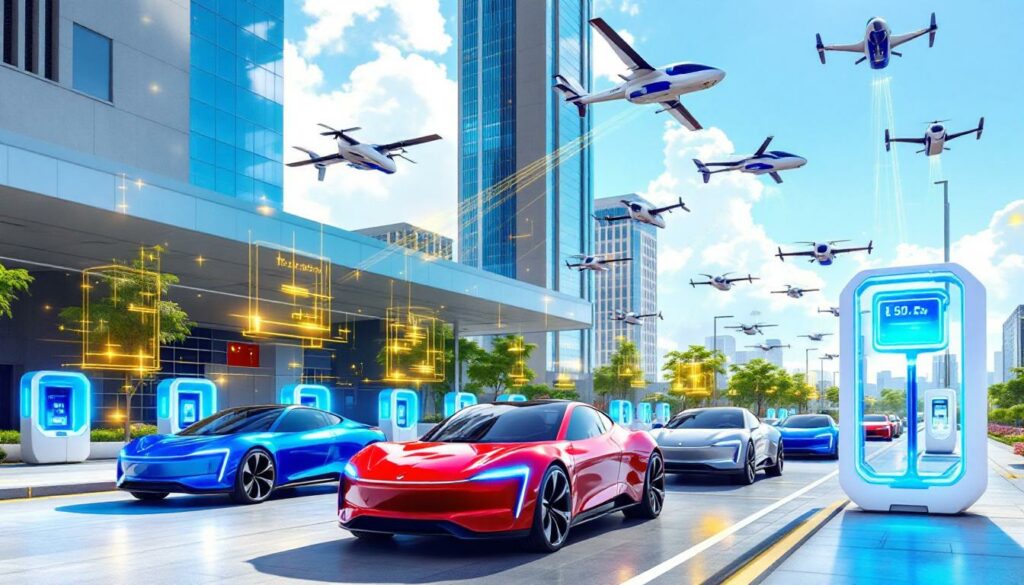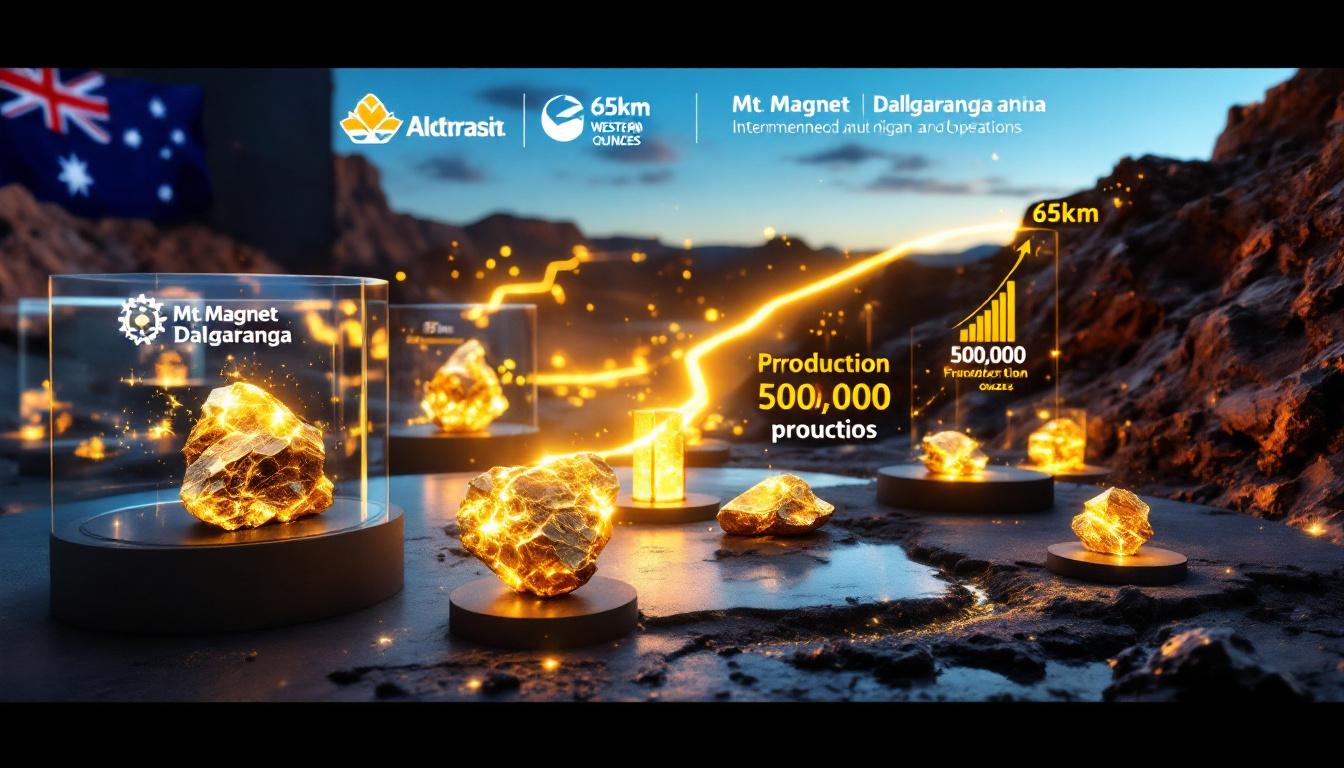The Evolving Landscape of Global New Energy Vehicles and China's Low-Altitude Economy
The transportation industry stands at a pivotal juncture, with new energy vehicles (NEVs) transforming ground mobility while emerging low-altitude aircraft technologies create entirely new economic opportunities. This technological convergence promises to reshape how people and goods move, particularly in China where policy support, manufacturing capabilities, and market scale combine to drive innovation. From battery recycling breakthrough to specialized magnetic materials, the technological foundations supporting this transformation are evolving rapidly, presenting both challenges and investment opportunities.
Current Market Landscape and Regional Adoption Rates
NEV adoption has accelerated dramatically since 2023, with global market penetration reaching unprecedented levels. According to the International Energy Agency, global NEV sales grew 35% year-over-year in 2024, with China maintaining approximately 60% of global market share. European markets have seen particularly strong growth in the premium segment, while North American adoption continues to accelerate in urban centers.
"NEV enterprises entering the eVTOL sector represents a major transportation trend that will define mobility for decades to come," noted Cui Dongshu, Secretary General of the Automotive Market Research Branch of the China Automobile Dealers Association, at the 2025 SMM Conference.
Regional policy frameworks have played a crucial role in this expansion. The EU's increasingly stringent CO2 emissions targets have forced manufacturers to accelerate electric vehicle production, while China's dual-credit policy continues to reward NEV production. In North America, expanded tax incentives under revised legislation have made electric vehicles in mining and other sectors more accessible to middle-income consumers.
Battery technology improvements have been equally important in driving adoption. Energy density in commercial cells has doubled from approximately 150 Wh/kg in 2020 to over 300 Wh/kg in 2025, according to research published in Nature Energy. This has enabled manufacturers to offer vehicles with 500+ kilometer ranges while reducing battery pack weights. Simultaneously, the introduction of 800V charging architecture has reduced charging times to approximately 15 minutes for 10-80% capacity, addressing a key consumer concern.
China's Emerging Low-Altitude Economy
The concept of a "low-altitude economy" encompasses commercial activities utilizing airspace below 1,000 meters, including electric vertical takeoff and landing (eVTOL) passenger transport, drone delivery services, aerial surveillance, and supporting infrastructure. This sector represents a new dimension of economic activity that promises to integrate with and complement traditional ground transportation systems.
According to McKinsey research, this emerging sector could reach a market size of $500 billion globally by 2030, with China positioned to capture a significant portion. The Civil Aviation Administration of China (CAAC) has already designated 25 cities as low-altitude airspace pilot zones, creating regulatory sandboxes for technology development and commercial testing.
Xu Changdong, Chairman of the China Overseas-Educated Scholars Development Foundation and the US-China Investment Fund, emphasized at the SMM Conference: "The low-altitude economy represents a natural integration with ground transportation systems, not a replacement. This complementary relationship will allow China to optimize urban mobility while addressing congestion challenges in major metropolitan areas."
China's advantages in this emerging sector include:
- Manufacturing scale: Leveraging existing NEV supply chains for critical components
- Battery technology leadership: Transferring ground vehicle innovations to aerial applications
- Regulatory agility: Creating specialized frameworks for new aircraft categories
- Urban density: Major cities providing ideal test beds for aerial mobility solutions
EHang's EH216-S received commercial certification from the CAAC in April 2025, making it among the first passenger-carrying autonomous aerial vehicles approved for operation. SF Express, China's leading logistics company, now handles 15% of Shenzhen's same-day deliveries using cargo drones, demonstrating the commercial viability of the technology.
Technical Challenges in Low-Altitude Electric Aircraft Development
Despite rapid progress, significant technical barriers remain before widespread eVTOL adoption becomes feasible. Battery energy density represents perhaps the most critical challenge, with current aviation-grade batteries offering 250-300 Wh/kg compared to the 400+ Wh/kg required for commercially viable passenger operations.
Professor Yan Feng, Director of the Engineering Technology Center for Low-altitude Aircraft Airworthiness Certification at the Civil Aviation Flight University of China, highlighted: "Safety redundancy systems increase eVTOL weight by 20-30% compared to theoretical minimums, creating a challenging balance between safety requirements and performance capabilities."
Certification timelines present another major hurdle. According to EASA (European Union Aviation Safety Agency) projections, new aircraft models typically require 3-5 years to progress through certification, though novel categories like eVTOLs may face extended timelines due to the lack of established standards. The DO-178C Level A certification required for flight control systems imposes extremely stringent verification requirements, demanding zero allowable errors in safety-critical software.
Infrastructure development represents the third critical challenge. A comprehensive urban air mobility ecosystem requires:
- Vertiports: Specialized takeoff and landing facilities with charging capabilities
- Charging systems: High-power infrastructure capable of rapid battery replenishment
- Air traffic management: Systems to safely coordinate increased low-altitude traffic
- Weather monitoring: Fine-grained atmospheric data in urban environments
Shenzhen has begun addressing these challenges with the construction of 50 vertiport sites throughout the city, according to government bulletins published in early 2025. These facilities will integrate with existing transportation hubs while providing the specialized infrastructure needed for eVTOL operations.
Ultra-Thin Soft Magnetic Materials: A Breakthrough Technology
One of the most promising technological developments supporting both NEVs and eVTOLs is the advancement in ultra-thin soft magnetic materials. These specialized alloys are critical components in electric motors, where they form the cores that channel magnetic flux with minimal energy loss.
Traditional silicon steel laminations used in electric motors typically range from 0.25mm to 0.35mm in thickness. However, newer ultra-thin materials with thicknesses of 0.15mm or less can reduce core losses by approximately 40%, according to research published in IEEE Transactions on Industrial Electronics in 2024.
Liu Huidan, Vice President of Hongwang Holding Group and Executive Director of Hunan Hongwang New Material Technology, explained at the SMM Conference: "Ultra-thin soft magnetic materials are enabling motors to achieve efficiency levels of 99%, compared to 94-96% with conventional materials. This efficiency gain translates directly to extended range in both ground and aerial electric vehicles."
The technical advances include:
- Nanocrystalline composition: Fe-Si-B-Cu alloys (Patent CN114908333A) with optimized grain structures
- High-frequency operation: Materials capable of efficient operation at 1-10kHz, reducing motor size by 25%
- Mass production breakthroughs: Production costs reduced to approximately $35/kg
These materials have already found commercial applications, with NIO's flagship ET9 utilizing Hongwang materials in its 800kW rear motor according to company press releases from December 2024. Similarly, the affordable Wuling Bingo achieved a 12% range increase through the integration of advanced soft magnetic materials in its drive system.
Critical Raw Materials for Electric Drive Systems
The rapid expansion of electric drive systems has created significant pressure on raw material supply chains. Neodymium, a critical component in high-performance permanent magnets, has exhibited substantial price volatility, rising from approximately $80/kg in 2023 to $140/kg in 2025 according to the SMM Rare Earth Index.
"Rare earth supply constraints are driving intensive motor redesign efforts throughout the industry," observed Ye Jianhua, General Manager of the SMM Industry Research Department. "Manufacturers are pursuing both material efficiency and alternative technologies to mitigate supply risks."
Copper represents another critical material, constituting approximately 65% of motor mass according to IDTechEx research. While copper is more widely available than rare earth elements, recent copper price insights and the substantial quantities required for electric motors make it a significant factor in overall drive system costs.
Technical strategies to address material challenges include:
- Dysprosium substitution: Techniques reducing dysprosium usage by 50% in high-temperature magnets
- Alternative winding materials: Aluminum adoption in approximately 15% of entry-level EVs
- Recycling advancements: Companies like Redwood Materials achieving 95% copper recovery rates
- Motor topology innovations: Switched reluctance and synchronous reluctance designs reducing magnet dependency
BMW has implemented ferrite magnets in auxiliary motors for its iX3 model, demonstrating the viability of reduced rare earth content in certain applications, according to the company's 2024 Sustainability Report. This approach represents a growing trend of material substitution in less performance-critical components.
Convergence of NEVs and eVTOLs in Future Transportation
The technological overlap between NEVs and eVTOLs creates significant opportunities for shared development pathways. According to McKinsey analysis, shared battery platforms could reduce research and development costs by approximately 40%, while Roland Berger projects 30% component commonality between ground and air electric vehicles by 2030.
This convergence manifests in several key areas:
- Battery technology: Shared cell chemistries with application-specific pack designs
- Power electronics: Common silicon carbide and gallium nitride semiconductor technologies
- Motor design principles: Shared efficiency optimization techniques and materials
- Thermal management: Similar cooling solutions for high-power systems
- Software algorithms: Related energy management and performance optimization approaches
The integration extends to infrastructure as well. Singapore's Land Transport Authority announced in 2024 that selected MRT stations would incorporate vertiport charging facilities, creating multimodal transportation hubs that seamlessly connect ground and air options.
Geely's Aerofugia division demonstrated this convergence by utilizing Volvo EV battery modules in its AE200 aerial vehicle, leveraging the parent company's automotive expertise for aerial applications. This approach reduces development time while benefiting from automotive-scale production economics.
A unified 900V architecture standard is emerging for both ground and aerial applications, according to SAE AS6803 Standard documentation published in 2024. This standardization enables charging infrastructure compatibility while optimizing power transmission efficiency across transportation modes.
Investment Opportunities in the Electric Drive Ecosystem
The transformation of transportation through electric drive systems presents diverse investment opportunities across the value chain. Motor materials represent one of the fastest-growing segments, with a projected CAGR of 34% from 2023 to 2030 according to Grand View Research.
Government support continues to accelerate market development, with China's National Development and Reform Commission (NDRC) allocating approximately $8 billion for vertiport development initiatives in 2025. This infrastructure investment creates opportunities in construction, equipment manufacturing, and operational services.
High-growth investment segments include:
- SiC power electronics: Market projected to reach $11 billion by 2027 (Yole Développement)
- Motor control software: Capturing approximately 40% of value chain profits
- Specialized cooling systems: Critical for both ground and aerial applications
- Battery management systems: Particularly those addressing aviation safety requirements
- Lightweight structural materials: Carbon fiber composites and advanced alloys
Hunan Hongwang announced a $2 billion expansion of its soft magnetic material production capabilities in 2024, according to provincial government announcements. This significant capital investment highlights the growth expectations for specialized motor materials.
Industry consolidation is accelerating, with BorgWarner's acquisition of motor control specialist Rhombus Energy in February 2025 representing a trend of larger suppliers expanding their electric drive capabilities through strategic purchases. This consolidation creates both risks and opportunities for investors as the competitive landscape evolves.
FAQ: Electric Drive Systems and Low-Altitude Economy
What defines the "low-altitude economy"?
The low-altitude economy encompasses commercial activities utilizing airspace below 1,000 meters, including eVTOL passenger transport, drone delivery services, aerial surveillance, and related infrastructure and services. This emerging sector represents a new dimension of economic activity that integrates with traditional ground transportation systems while creating novel capabilities for urban mobility, logistics, and monitoring applications.
How do electric motors for vehicles differ from those used in aircraft?
Electric motors for aircraft require significantly higher power-to-weight ratios, enhanced reliability systems, and greater thermal management capabilities compared to automotive applications. Aircraft motors must maintain optimal performance at varying altitudes and atmospheric conditions while meeting more stringent safety certification requirements. Redundancy is particularly critical in aviation applications, with multiple independent motor systems often required for certification compliance.
What are the primary raw materials needed for electric drive systems?
Electric drive systems rely on copper for windings, rare earth elements (particularly neodymium and dysprosium) for permanent magnets, silicon steel or advanced soft magnetic materials for cores, aluminum for structural components, and various specialty metals for power electronics. Each material faces specific supply chain considerations, with rare earth elements presenting the greatest concentration risk due to limited global mining and processing capacity.
When might we see commercial eVTOL services become widely available?
Based on current development trajectories, limited commercial eVTOL services may begin operations in select markets by 2026-2027, with wider adoption expected in the 2028-2030 timeframe. Full integration into transportation systems will likely extend into the 2030s as regulatory frameworks mature and infrastructure develops. Initial services will likely focus on fixed routes between established vertiports, gradually expanding to more flexible operations as technology and regulations evolve.
What role does China play in the global NEV and eVTOL ecosystems?
China maintains leadership in NEV production volume and battery manufacturing capacity while rapidly developing capabilities in eVTOL technology. The country's advantages include manufacturing scale, supply chain integration, battery technology expertise, and a supportive regulatory environment. China's urban density also creates ideal testing conditions for aerial mobility solutions, while government initiatives provide both funding and policy support for technological development.
How will battery technology evolve to meet aerial mobility requirements?
Aviation battery requirements exceed those of ground vehicles, necessitating energy densities above 400 Wh/kg for commercially viable operations. Research pathways include solid-state electrolytes, silicon-dominant anodes, lithium-sulfur chemistries, and advanced thermal management systems. Safety certification for aviation batteries requires extremely rigorous testing protocols, including nail penetration, crush resistance, and thermal runway containment. Near-term solutions may include hybrid systems that combine batteries with range-extending generators for specific mission profiles.
Further Exploration
Readers interested in learning more about the development of new energy vehicles and low-altitude mobility can explore educational content from industry conferences such as the SMM Electric Drive System Conference & Drive Motor Industry Forum, which brings together experts to discuss emerging transportation technologies and market trends. Academic research from institutions specializing in electric propulsion and aeronautical engineering provides additional technical depth, while regulatory agencies like the CAAC and EASA publish certification roadmaps that outline the path to commercial operations. The ongoing critical minerals transition and lithium refinery advancements also play vital roles in supporting the outlook for global new energy vehicles and China's low-altitude economy.
Want to Stay Ahead of Major Mining and Exploration Discoveries?
Discovery Alert's proprietary Discovery IQ model delivers real-time notifications on significant ASX mineral discoveries, instantly transforming complex data into actionable investment opportunities before the broader market responds. Explore why major mineral discoveries can generate substantial returns by visiting Discovery Alert's dedicated discoveries page and begin your 30-day free trial today.




